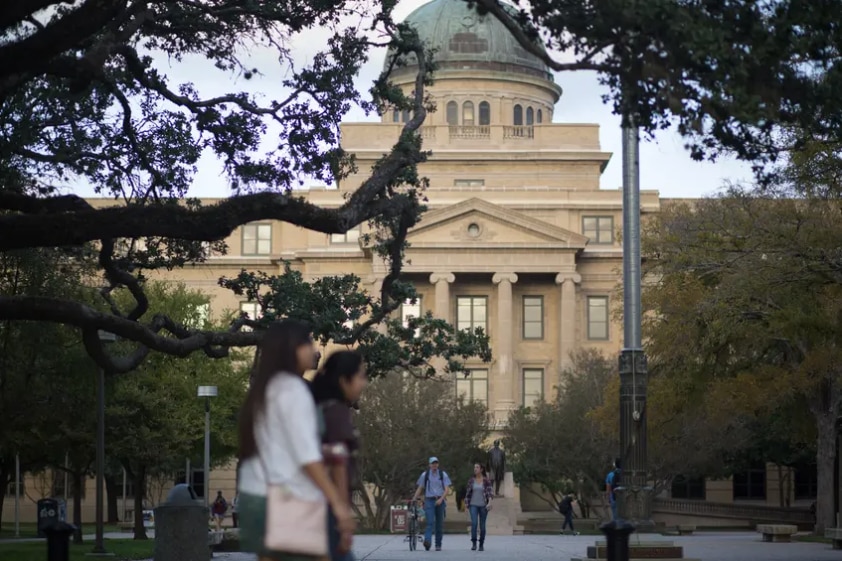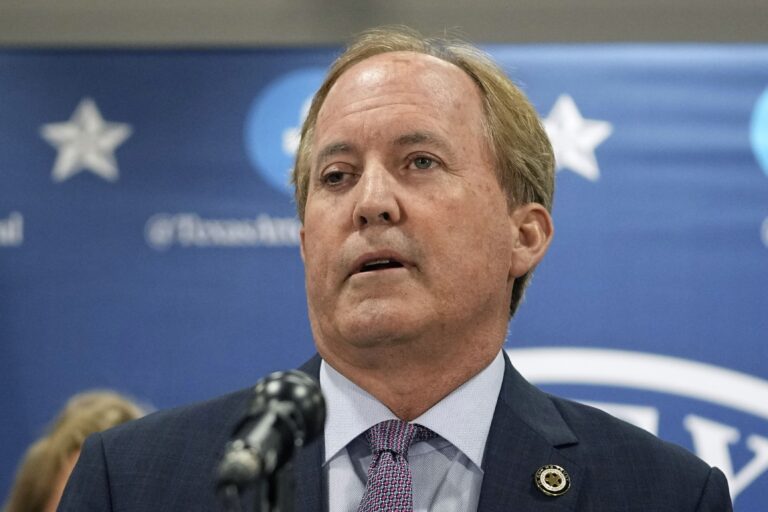Texas A&M System’s guidance on the state’s DEI ban shows compliance might be a hard needle to thread
The Texas A&M University System issued staff guidance earlier this month on how to comply with the state’s ban on diversity, equity and inclusion initiatives, providing a first glimpse into how Texas universities are navigating the thorny implementation of the new law.
The guidance, compiled in a list of FAQs, is meant to provide clarity on the law but also shows that university employees trying not to run afoul of the ban may have a hard needle to thread.
Guidance for university website and social media administrators states that “DEI information should not be on university websites, including but not limited to the acronym, DEI, or the phrase ‘diversity, equity, and inclusion.’” Universities might organize events that “support diversity in a general way” but must not “promote preferential treatment of any particular group and are open to everyone.”
It will be the responsibility of every employee to comply with the law’s requirements, the guidance said. The system’s ethics and compliance office will oversee the implementation of the law and receive guidance from its general counsel as situations or questions arise.
In a list of approved revisions by the Board of Regents, the A&M System said it will no longer require faculty job applicants to submit a diversity statement — essays where candidates show their commitment to supporting students from diverse backgrounds and fostering inclusive learning environments — or allow schools to consider race, sex, color or ethnicity as hiring factors. Requiring training or promoting policies related to DEI will also no longer be permitted.
Senate Bill 17, which goes into effect at the beginning of next year, was a high legislative priority this year for Texas Republicans who accused DEI offices and programs of indoctrinating students with left-wing ideology and forcing schools to prioritize hiring based on how much job candidates supported diversity rather than merit. Critics of the law say it is a step backward for higher education in Texas, saying DEI initiatives boost student enrollment numbers among underrepresented populations and help universities hire employees from more diverse backgrounds.
In a message sent to faculty, staff and students earlier this month, Texas A&M University Interim President Mark Welsh III said the school will change its hiring practices and training, dissolve its office for diversity and seek other revisions to university policies.
Other state universities have taken similar steps.
The University of Texas System halted all DEI policies in February and required all universities under the system to develop policies to discipline employees or contractors who break the law. The University of Houston System Chancellor Renu Khator announced in June a list of guidelines the institution will follow in response to the law.
Jeff Shields, former president of the Texas Association of College Teachers, said higher education leaders around the state may be interpreting the law differently from one another, with some providing more strict guidelines than others. The law, only seven pages long, leaves some rules up for interpretation, he said.
“My concern now is that I want to make … sure that everybody understands what the law actually says [and] what it doesn’t say,” Shields said. “There can be a temptation, by some, to try to overreach and say that this should also be applied to instruction.”
To continue to receive state funding, Texas universities must comply with the ban’s requirements. This includes annual reporting to the Texas Higher Education Coordinating Board to prove compliance with SB 17 before schools can spend state funds.
To ensure compliance with the law, the Texas A&M University System said disciplinary action may be taken against employees or contractors who violate the law. Individuals can report violations to the system’s Ethic Points reporting system.
Student organizations — including those involved in DEI initiatives — are exempt from the law and universities may still provide funds, support and facilities to them.
“It is important to remember that nothing in SB 17 alters our existing obligations under federal and state law, including the anti-discrimination requirements of Title VI and Title VII of the Civil Rights Act of 1964, and the Equal Protection Clause of the 14th Amendment,” the system’s guidance says. “We must continue to ensure that our programs and activities are open and available to all persons on a non-discriminatory basis.”
Concerns about attracting legislators’ ire over the DEI ban came to a head at A&M earlier this year when the university botched the hiring of Kathleen O. McElroy, a Black journalism professor, to revive the school’s journalism program.
McElroy previously said that her appointment was caught up in “DEI hysteria” as Texas university leaders try to figure out what type of work involving race is allowed under the new law. In text messages the system released as part of an internal review, members of the Board of Regents also raised concerns with her previous job history at The New York Times and pushed back against what they perceive as a liberal agenda in higher education. The debacle ultimately led to the resignation of former A&M President M. Katherine Banks, and José Luis Bermúdez, the former interim dean of the school’s College of Arts and Sciences. Shannon Van Zandt, an executive associate dean in the School of Architecture, also resigned over concerns about political interference in the university’s hiring process.
Disclosure: Texas A&M University, New York Times, Texas A&M University System, University of Texas System and University of Houston have been financial supporters of The Texas Tribune, a nonprofit, nonpartisan news organization that is funded in part by donations from members, foundations and corporate sponsors. Financial supporters play no role in the Tribune’s journalism. Find a complete list of them here.







